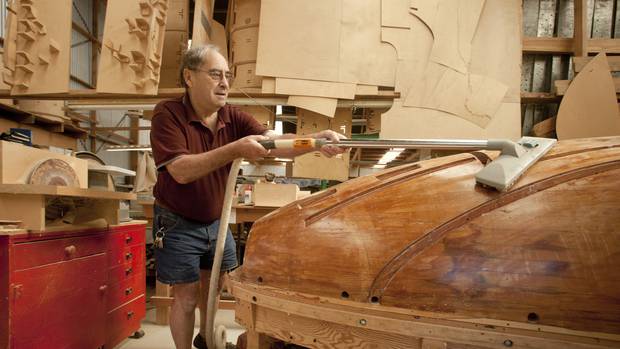
photo Michelle Hyslop
The HAA is saddened to hear of the recent death of Glyn Powell, whose vision, craftsmanship and engineering expertise is responsible for the fact that there are today 3 airworthy DH-98 Mosquitos.
Thirty years ago he was in a group of fellow New Zealanders who enthused about the prospect of returning a Mosquito to the air, but the sheer complexity defeated most of them, and he alone pursued his vision to make it happen. He purchased the remains of NZ2308 , a Mosquito T.43 ,and began the work of restoring it. That task included securing 8,000 drawings on microfilm from the Smithsonian Institute, as well as travelling the world to examine, in detail, preserved Mosquitos. He also became a fervent collector of Mosquito parts.
One of the most difficult aspects of the aircraft’s construction is its wooden airframe. Made of a combination of plywood and balsa wood, the fuselage would require the construction of two moulds, composed of douglas fir and cedar wood. That was a challenging task at a time when, aside from the construction of high-end furniture and musical instruments, the craft of woodworking is fading. Much thanks goes to the professionals at Avspecs Ltd, a New Zealand-based vintage aircraft restoration company, for their workmanship in forming the fuselage in a manner that reflected the original design.
The first fully-restored, fully-functional Mosquito, KA113, thrilled audiences when it made its post-restoration maiden flight in Sept. 2012. It went on to receive the award for Grand Champion WW2 Warbird at the 2015 EAA Oshkosh Airshow. To date, three Mosquitos have been reconstructed and are airworthy. A fourth, Powell’s original plane NZ2308, was in the process of being restored, as financing permitted.
In the words of his colleague Theo Botha “the reason Glyn started this was not because he wanted to sell one, or because he wanted to build one. He wanted to fly one and keep the memory of this thing alive. And when he was finished flying it, his ambition was to have it sent straight back to the UK, where it could be an important part of the flying military history over there.”
Thanks also to the efforts of the Mosquito Pathfinder Trust, Glyn’s ambitious vision may yet come to fruition.
